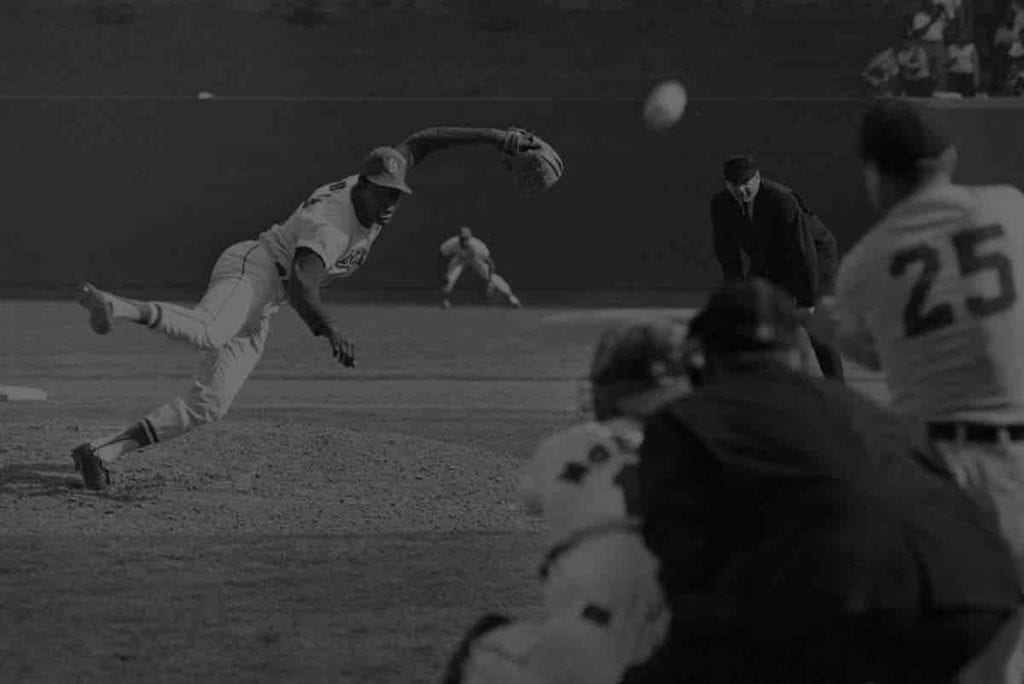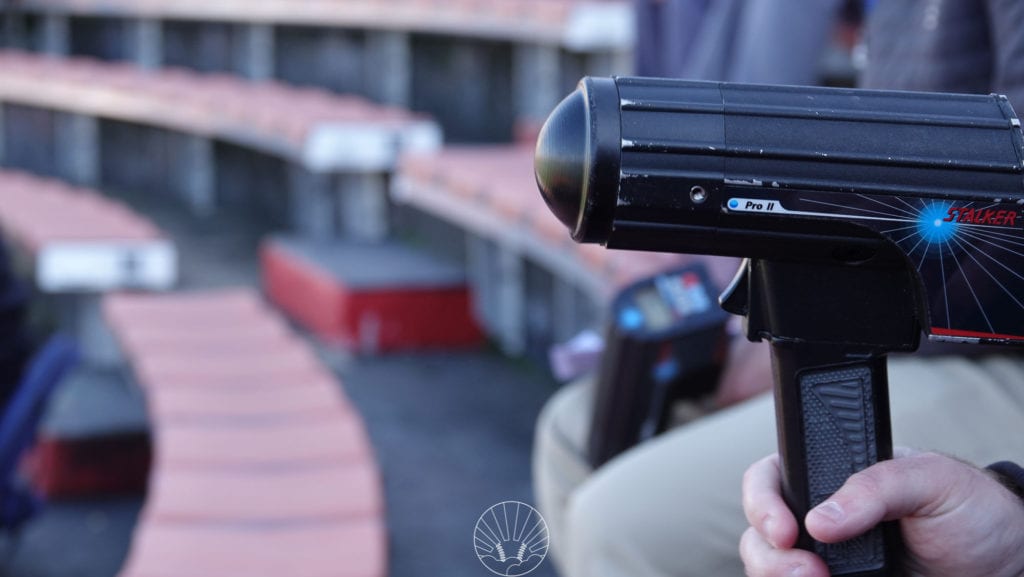*This article may contain product links which pay me a small commission if you make a purchase. Learn more.
Late winter is the time of year when everyone starts to analyze their velocity, which gives rise to many common pitching velocity myths in baseball.
So, it’s a worthwhile conversation to have about pitching velocity. Where does it come from? How do we build it? Is 100 the new 90? Does everyone throw 90 now? Read on for answers.
Common Pitching Velocity Questions
- How hard do I throw in comparison with everyone else?
- Do I throw hard enough to get noticed?
- Why don’t I throw as hard as (insert name)?
- Why am I falling short of the velocity I expected, or threw in the past?
- What’s a good speed for a bullpen?
- Where should I be during the season?
These are all valid questions.
Everyone expects to gain 5 miles and throw their new max speed in the bullpen. But, this isn’t reality. Let’s look at five pitching velocity myths and discuss some of the norms regarding crow hop, bullpen and mound velocity.
Brand New Video on Pitching Velocity Myths
If you want to improve your pitching velocity, start by reading every word in my detailed pitching mechanics article.
First: Learn More About Pitching Velocity in This Video
There are a lot of factors that going into throwing 90mph. Pitching velocity isn’t easy to build–it takes long term commitment.
But, read on for more of our discussion today on pitching velocity myths.
Pitching Velocity Myth #1: 90 is Now Ordinary and Commonplace
First, to be clear: for pitchers, the measure of velocity is from the mound. I don’t care how hard a pitcher can throw from a crow hop. If you can’t throw that hard from a mound, you don’t throw that hard.
There’s one notable pitching coach who claims to believe that every pitcher is capable of throwing 90mph. I appreciate his exuberance, and though I’m not sure what exactly he means (mound, crow hop, peak, average?), I vehemently disagree.
The reality is that it is VERY HARD to touch 90mph, and even rarer to average 90. Even with great coaching most will not achieve it. To say that it’s achievable by the masses is to instill a lot of false hope.
There is too much parity in genetics from one person to another. Though I don’t believe that you have to be a genetic freak to throw 90, you DO have to have solid athleticism, sufficient laxity, high-speed coordination, fast-twitch muscle fibers, to name a few.
And, one must have these attributes EARLY – otherwise one gets left behind for good upon getting cut from the local travel team. Sure – some people make drastic gains later on in their development (your author is one example), but this only one waning side of the bell curve.
Velocity Myth #2: “I Throw 90”
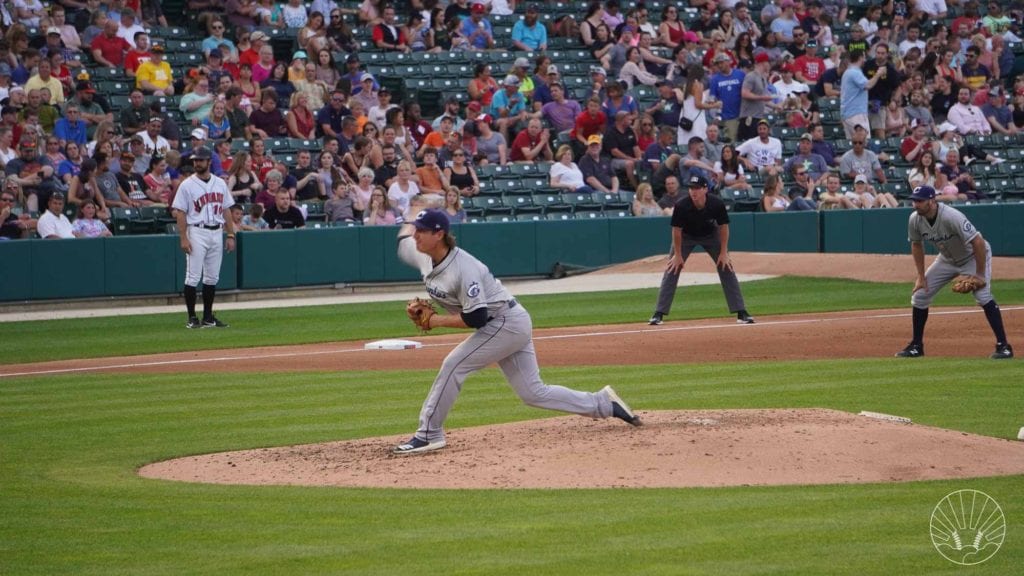
“I throw 90” implies that a person consistently throws 90 miles per hour. Despite it being more common than ever, still, very few pitchers can do this.
On the average Division-I baseball team, each team usually has 4-8 players capable of touching 90mph, though perhaps only 1 or 2 who can average it. This is because “peak” speed (what we refer to as “touching”) is often 3 miles per hour harder than what is averaged (“sit” speed).
Even on the best teams in the country, the coaches can’t find enough high-velocity arms to fill out their staff. Though a pro roster will have players sitting at or around 90 from top to bottom, usually only the top half of even the best collegiate rosters are capable of seeing a 90 on the velocity chart.
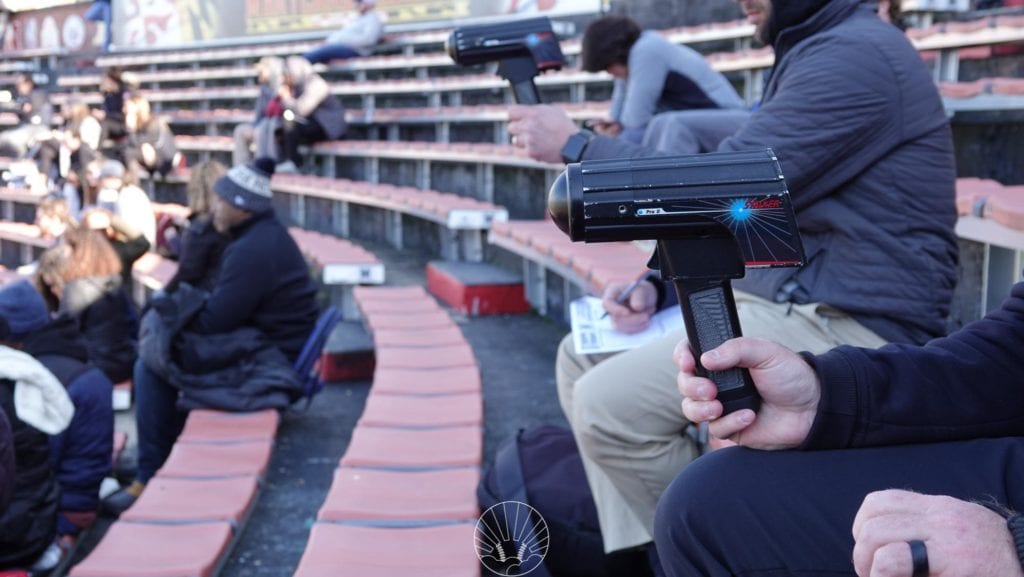
How many pitchers do you know who can touch 93 or 94 miles per hour? Not many, I bet. There’s a big difference between the pitcher who throws every pitch at 90 (what I deem, “throwing 90”) and the pitcher who throws one pitch at 90 and 59 pitches at 87. That’s called “throwing 87.”
Thing is, to average 90+ you have to have a peak speed of 93 or better. Otherwise, you simply can’t keep the average from dipping. For every 88 that shows up, at least one 92 has to counteract it to keep that average above 90. As a pitcher who’s job it is to get outs, it can’t be a concern how hard you’re throwing. So, invariably you throw some a little harder, and some a little softer. Basically, your “soft” fastballs have to be no softer than 89 or 90 if you have any chance of averaging 90+. That means “hard” fastballs are more like 92, 93, 94, 95.
For starting pitchers throwing hundreds of innings over the course of a spring and summer season, there’s too much fatigue. If 90 is ones peak, it’s impossible to hover at peak speed for more than a handful of pitches, and certainly not 100 pitch starts, week in and week out. Look at MLB All-Stars – these guys pitch in the low-90s during the season, yet sit 94-97 in one-inning All-Star appearances. They have that on tap. Only 61 starters in Major League Baseball averaged 90 or better in 2013, says Fangraphs.com
Really, “I throw 90,” in 99% of cases means, “I’ve touched a 90 at least one time in my life.” Touching 90 is rare, and averaging 90 is even more so. There just aren’t enough 93, 94 and 95mph peak-speed arms out there.
Myth #3: 100 Is The New 90
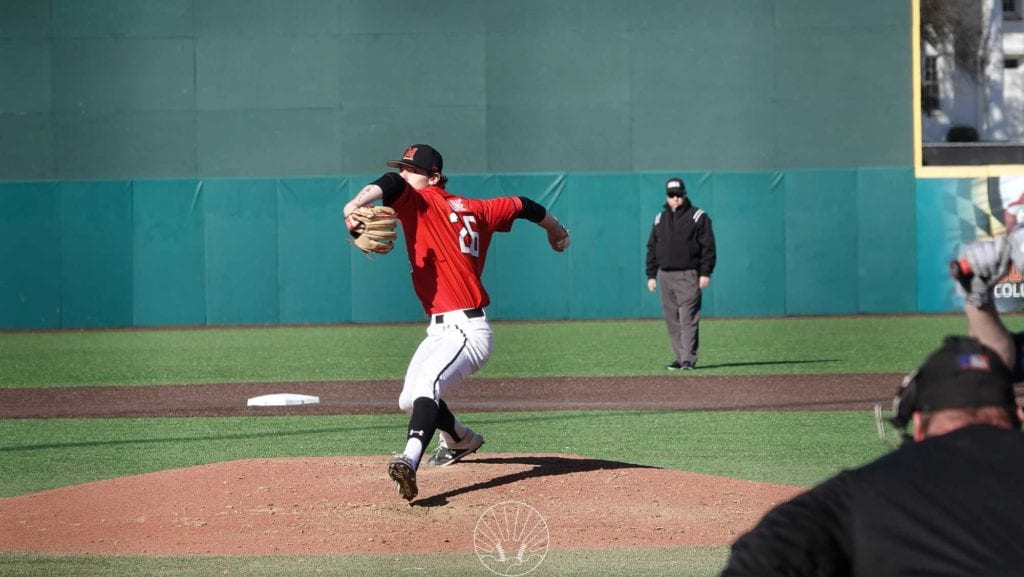
A handful of pitchers can touch 100. Despite the fact that average and peak velocities still continue to climb, pitching a baseball 100mph is still incredibly rare, and only a few handfuls of pitchers can currently even touch it – and not even Aroldis Chapman averages it. It is insane to think that any any point will 100 be the new 90. I would agree that 92 is the new 90 – it’s a now a benchmark that is commonly averaged or exceeded by a majority of minor and major league pitchers.
But I Can crow-hop 100!
Uh.
Newsflash: No one cares.
I know players who crow hop 100+ but throw 89-92 from the mound. So….who cares?
We do some crow-hop throws in our facility, but I don’t consider them all that relevant for pitchers. Unfortunately, some players and coaches advertise crow hop velocities, hoping prospective clients assume that these advertised speeds are mound speeds; they’re not.
A simple crow hop that an infielder would take after fielding a grounder, or that an outfielder would take from beneath a fly ball, will add an average of 3-4 mph. If you add running to that, the added velocity continues to grow.
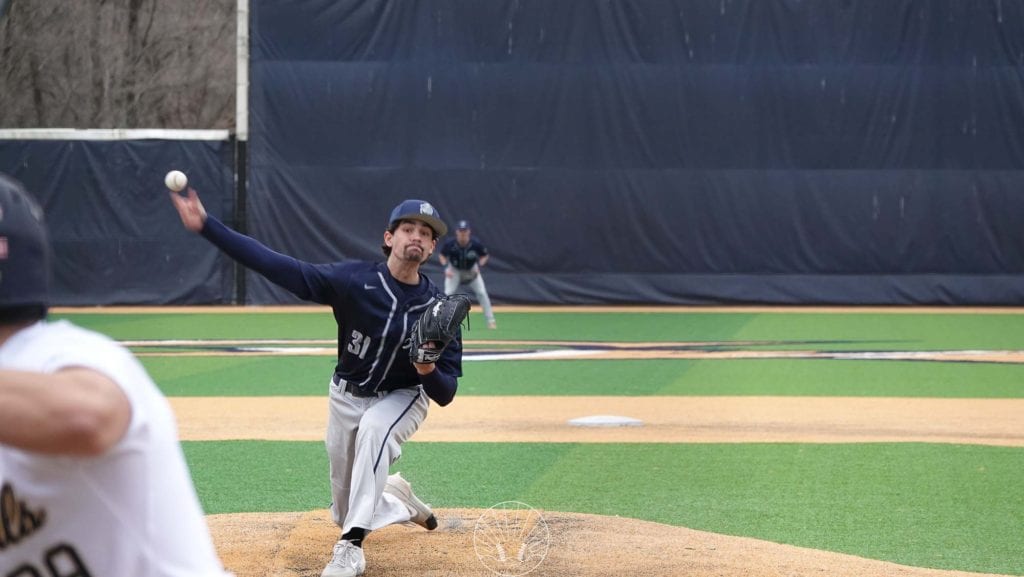
One of our interns from last summer, a reliever at a D-I school in Maryland who last year pitched at 87-91, reached 99-102 mph with what he described as “a huge, really aggressive run-up.” He’s throwing a little harder this year, but still is an 89-92 pitcher. Running with a crow hop added 10 miles per hour to his peak speed, which seems irrelevant considering he can’t pitch anywhere near this.
My point is, no matter what people are telling you, 90 is still THE major milestone. 92 is the new 90, but 90 is still a BIG deal. The average velocity in MLB has indeed increased by about 2 miles per hour, but 100s still aren’t, and won’t, be prevalent.
Myth #4: All Radar Guns Are the Same
Stalker Radar Gun – The Pro Standard
We own two Stalker radar guns because I didn’t want to be speaking the wrong language to coaches and scouts. 100% of MLB scouts use Stalker guns, which are advanced doppler radar. The only other prominent doppler radar gun is the JUGS, an old model of which is seen in the 101 mph video.
These can have wild swings, as they have a different algorithm (as I understand it) for calculating speed, one that tends to round numbers up. This was explained to me by a man who repairs radar guns for a living – he said they’re both good, quality machines, but the original JUGS calculates differently.
It’s important to note that there are two more recent JUGS models since the first, somewhat inaccurate one in question here. The second generation was subcontracted to Stalker (so it was basically a Stalker), but the most recent generation is made by Decatur Sports. So, the model and generation depends on a lot, and I haven’t tested the most recent generation.
Jugs Radar Gun – Good But A Bit Distrusted
Personally, I had an old-model JUGS before selling it, and it was consistently 2-3mph high. I held it side by side of my Stalker before selling it. I also gunned one of our high schoolers at 84-86 over numerous bullpens a few years ago. His first bullpen at tryouts that year was overseen by a JUGS gun…he sat 88-91.
His coach was VERY excited and told this kids parents, who promptly assured him that he didn’t really throw that hard; all winter we had him at 84-86. I can’t talk to a scout about one of our pitchers unless I am absolutely sure how hard he throws, which is why we went with Stalker – it’s the same gun the scout will use when he comes to verify. I don’t want to lose face.
Ball Coach by Pocket Radar – Best For Velocity Tracking
Pocket Radar has become very popular recently, and understandably so – they’re accurate, relatively inexpensive and can be throwing into the back pocket.
For a parent or player simply wanting to track progress over time (with either throwing velocity or exit speed off the bat, it’s a great choice – traditional radar guns are bigger, clunkier and not really necessary to get daily measurements.
And, because it’s so small, setting it up to get readings is a lot easier – even sticking it to something (or using an iPhone holder) while the camera rolls can work well – no tripod required like a traditional radar gun.
Myth #5: I Throw 90 in The Bullpen
It’s normal to throw 3-5mph slower in the bullpen.

I get frustrated by bullpen velocity just like the rest of us. I struggle, without adrenaline, to get above 88mph; I’ve always been this way. But, I remind myself of a quote by my friend Donnie Smith, who was the closer during my time in Fargo. He touched 98 one night and sat 94-96 in front of a few scouts. Donnie was a former 2nd round pick of the Cardinals and his ball just zoomed by hitters. After impressing a few scouts in Fargo, he said he was approached by a MLB team in the offseason. They said if he threw well and could hit 94 in a bullpen they organized for him in January, they’d sign him. This is what he said to me regarding that.
Yeah, they said if I could hit 94 in a bullpen they’d sign me. I told them don’t bother. 94? I could hit 91 in a bullpen, maybe. I’ve hit 98 in a game but there’s no way I can get pumped up enough to come close to that indoors, on a turf mound with no one watching.
I remind myself of this all the time when I feel discouraged. Here’s a guy who threw as hard as I currently want to throw, who admitted that he couldn’t even sniff his game velocity in the pen. It gives me and all of us hope.
Bottom line is that if you can throw up 90s in the bullpen, you’re probably throwing a lot of 95s in games. And if you’re like most 88-91 pitchers, your bullpens are somewhere in the 84-87 range. It just isn’t easy to throw 90.

And, if you’re throwing just as hard in a bullpen as you do in a game, then you’ve gotten very good at summoning game intensity in practice – kudos to you, but I’m not what the benefit of that really is.
It’s just like the algorithm with averages – due to the lack of competition, adrenaline, cleats, clay mounds, fans, etc., velocity just refuses cooperate. 100% effort bullpens are more like 92% of a pitcher’s max in-game speed, which is a frustrating reality.
It’s Still Hard to Throw 90.
There’s a lot of velocity development stuff out there on the web, some of it good, some of it terrible, and much of it somewhere in the middle – probably not that safe and probably only effective for some.
But, being realistic is a good way to go in with eyes wide open to the realities of it all.
Want to Throw Harder? Download My Free Checklist for Pitchers.
Regardless of how hard you throw today, work hard on improving yourself for tomorrow. Are you doing everything you need to be doing?
Download my pitchers’ development checklist to learn what high-level pitchers do. You’ll also get a VIP video that explains all of it, and access to my weekly newsletter.
Pitching Velocity FAQ
Have a question? Leave one below and check out these common questions.
How difficult is it to throw 90 mph?
It’s still very difficult. Though more pitchers than ever reach this milestone, it’s still very difficult and an excellent achievement to throw a baseball 90 miles per hour. Social media makes it appear as if “everyone” throws 90 today, but the reality is that it’s still very rare. It’s even more rare to “sit” at 90, meaning the average velocity of every pitch is 90 or greater.
If you throw 100mph on a run, how fast would you throw off a mound?
Probably 6-12 mph slower. Typically, pitchers throw about 8-10 mph faster when running or doing a “run and gun” as compared to throwing off the mound. So if you throw 100mph from a crow hop running throw, you probably throw 90-92 off the mound.
